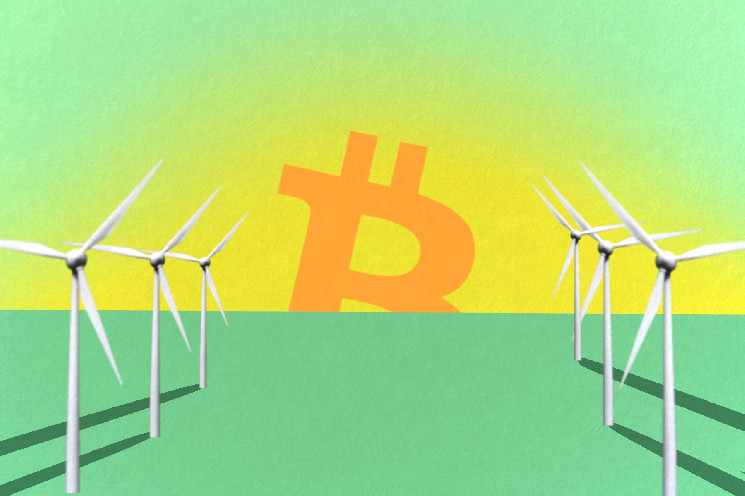Bitcoin’s High Fees Brought Back Bull Market-Level Mining Revenue, But Not for Long

Bitcoin (BTC) miners, battered by the brutal crypto winter of 2022, are racking up record revenue as transaction fees on the network have soared to their highest levels in two years.
A miner’s revenue is made up of two components: block rewards, currently set at 6.25 BTC ($175,000), and transaction fees, which vary based on network demand. Traditionally, or at least since 2017, fees have been lower than rewards.
However, in recent days, some bitcoin miners are getting paid more to process transactions on the blockchain than they’re rewarded for creating new bitcoin, partly due to the Ordinals protocol.
Ordinals allow for the inscription of non-fungible tokens and the creation of bitcoin-backed fungible tokens, known as BRC-20s. These tokens have been used to create meme coins that have seen massive jumps in value in the past week or so.
On Tuesday, the transaction fees on bitcoin represented 75% of the current block reward, currently at 6.25 BTC, as opposed to the usual 2%-5%, said Tim Rainey, treasurer at Greenidge Generation Holdings (GREE). “This is approximately equivalent to the increase in mining revenue if the bitcoin price surged from the current $28,000 level to $50,000,” he said.
The bitcoin price last was around $50,000 levels back in 2021’s bull market, when miners were bringing in record levels of margins. However, the margins vaporized very quickly, in 2022, after bitcoin collapsed, energy costs surged and capital markets essentially stopped providing new funding.
“The last two days (Sunday and Monday) have consecutively been Cipher’s highest revenue days ever. We mined roughly 21 bitcoin on Sunday and roughly 24 bitcoin on Monday,” the firm’s CEO Tyler Page told CoinDesk.
Read more: Pump the BRCs: The Promise and Peril of Bitcoin-backed Tokens
It is a welcome reprieve for an industry that saw major firms like Core Scientific (CORZ) and Compute North entering bankruptcy proceedings due to a continued bear market.
Short-term expectations
However, the unexpected revenue bump may not last long as users are already looking elsewhere for their transactions due to high fees.
This trend is expected to last only another week or so, according to TeraWulf (WULF) Chief Strategy Officer Kerri Langlais.
For example, use of the Lightning Network, a layer 2 solution for transaction processing, as well as stablecoins in some regions, have seen an uptick in transactions. Meanwhile, the spike in profitability isn’t enough to incentivize miners to dust off their older mining computers to decongest the network, according to TheMinerMag Head of Research Wolfie Zhao.
Read more: Litecoin Transactions Hit Record High as Bitcoin Fees Surge Amid BRC-20 Frenzy
“The hype [around Ordinals] may not be sustainable” and fees have already fallen 60%-70% from their peak, but it is possible that as use cases increase demand for block space, so will fees, according to Charles Chong, senior manager of business development at Foundry, which operates the world’s largest mining pool and is owned by CoinDesk’s parent company, Digital Currency Group.
Ethan Vera, chief operations officer at mining services firm Luxor Technologies, said that even if the hype wears off, “a higher base demand on the mempool is established resulting in higher transaction fees for miners.” Mempools are essentially waiting rooms for bitcoin transactions.
Mining pools to the test
The sudden surging fees have also put the mining pools to the test as their revenue composition has changed drastically.
About 17%-25% of their revenue contribution in May came from transaction fees, as opposed to the range of 1%-3% that was the case for the rest of 2023, according to TheMinerMag’s Zhao.
This unexpected change is resulting in pools needing to hold more bitcoin reserves, according to Foundry’s Chong. “For FPPS [full pay per share] pools, this means they need to hold more BTC reserve as the pool luck component is exacerbated by the high fees, meaning if a pool is unlucky during this period, it will incur a larger loss paying miners the fees that it did not collect,” he said.
FFPS pools, the method Foundry USA also uses for payouts, share the transaction fees with the miners according to how much hash rate they contribute, based on an estimated average transaction fee for a given time period. This means the pool should have to keep more bitcoin in reserve in case it gets unlucky and doesn’t win enough blocks with enough revenue to meet user payouts, explained Colin Harper, head of content and research at Luxor.
At the same time, congestion and rapid changes in the mempool are challenging pools’ technology as they have to “quickly adapt order the transactions and maximize fee reward to the customers,” Chong added.
The way ahead
One possible silver lining of this short-lived phenomenon is that it gives a glimpse of the future of bitcoin miners, when the bitcoin network will eventually stop giving out block rewards sometime around 2140, at which point miners will only be bringing in transaction fees.
“While it is ultimately up to the market to determine the sustainability of this new application [Ordinals], we view this as a positive long-term development for the security budget of Bitcoin as block rewards will eventually cease and miners will entirely rely on transaction fees for compensation,” wrote investment bank Stifel GMP’s analyst Bill Papanastasiou in a research report.
The transaction fees debacle also shows the importance of miners for the integrity of the whole network.
“Without mining there is no BTC,” and miners will be well compensated for in the future as the uses of bitcoin grow, said TeraWulf’s Langlais.
Read more: Bitcoin Community Erupts in Existential Debate Over NFT Project Ordinals






 Bitcoin
Bitcoin  Ethereum
Ethereum  Tether
Tether  USDC
USDC  TRON
TRON  Dogecoin
Dogecoin  Cardano
Cardano  Bitcoin Cash
Bitcoin Cash  Chainlink
Chainlink  LEO Token
LEO Token  Stellar
Stellar  Monero
Monero  Zcash
Zcash  Litecoin
Litecoin  Hedera
Hedera  Dai
Dai  Cronos
Cronos  OKB
OKB  Tether Gold
Tether Gold  Ethereum Classic
Ethereum Classic  KuCoin
KuCoin  Gate
Gate  Algorand
Algorand  Cosmos Hub
Cosmos Hub  VeChain
VeChain  Dash
Dash  Tezos
Tezos  Stacks
Stacks  TrueUSD
TrueUSD  IOTA
IOTA  Basic Attention
Basic Attention  Theta Network
Theta Network  Decred
Decred  NEO
NEO  Synthetix
Synthetix  Qtum
Qtum  Ravencoin
Ravencoin  0x Protocol
0x Protocol  DigiByte
DigiByte  Zilliqa
Zilliqa  Nano
Nano  Numeraire
Numeraire  Siacoin
Siacoin  Waves
Waves  Ontology
Ontology  Status
Status  Enjin Coin
Enjin Coin  BUSD
BUSD  Pax Dollar
Pax Dollar  Hive
Hive  Lisk
Lisk  Steem
Steem  Huobi
Huobi  OMG Network
OMG Network  NEM
NEM  Augur
Augur  Bitcoin Gold
Bitcoin Gold  Ren
Ren